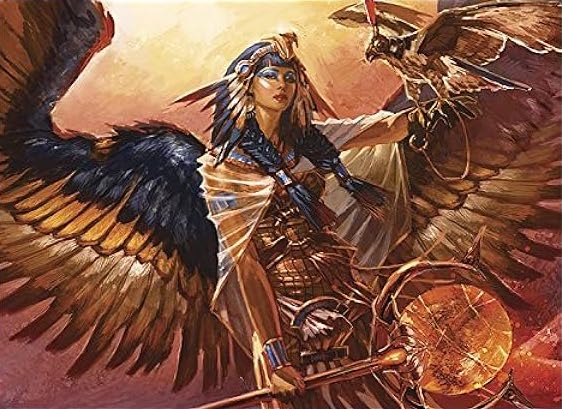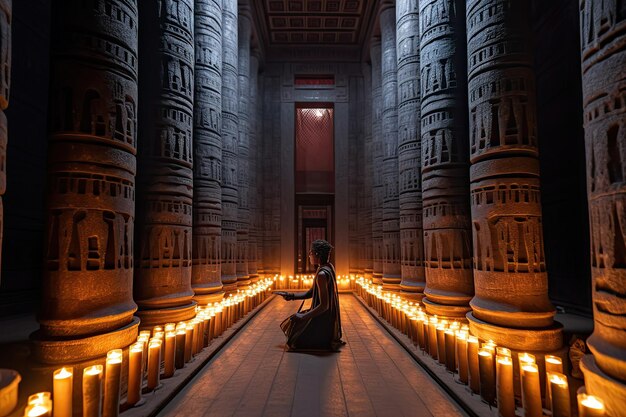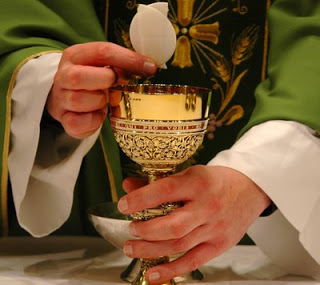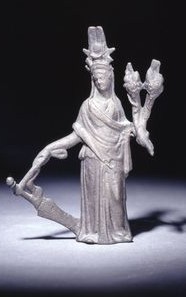Once a day? Once a week? Once a month? Only at festivals?
And no matter what you do, do you sometimes feel guilty that you’re not doing enough? Do you worry that Isis may be displeased because you’re “not doing it right?”
If so, you’re not alone. Many of us feel like that from time to time (or even more often).
But let me tell you a secret.
It’s not a deep, dark secret. In fact, I think we all know it in our hearts. But we are human and we forget.
The first part of this secret is that Isis knows. She knows what we’re going through and what’s hard for us right now. She has Divine patience and compassion. And while we might not have infinite time in our lives, She does. If we drift away, She will always, always welcome us back. Even if it’s with a sly smile and a wry comment.
The other part of the secret is that—very often—our way of relating has to do with where we are in our lives. Now, mind you, my next comments are very generalized. Your path may—absolutely will, in fact—vary.
Some of us find Her early in life, some of us at later points. Some find Her, leave for a while, then come back. Some come to Her only for a specific period in our lives. Whatever the situation, it’s important to take into account where we are in our individual lives and what’s going on with us in general before we start getting all guilty and worried. And by “where we are in our lives,” I mean what stage of life we’re in as we grow and change over the decades.
In our teen years, we’re exploring. Everything is new and can be confusing. Will the Goddess be angry if I don’t have an altar? What if I don’t say or do the right thing? And there are so many people online who are willing to tell us exactly-what-we-should-be-doing for Isis or Hekate or Dionysos. Who do I listen to? Depending on what our home lives are like, in our teens, we may also have to hide our interest in Isis. (Btw, She won’t care if you don’t have an altar.)
In our 20s, we find new freedoms. We might discover like-minded others with whom to explore an interest in Isis. This is when many people start their personal practice and begin to develop the habits that will become a key part of their ongoing relationship with Isis. And because we’re more in control of our own schedule, this is when we might find we have more time to spend with Her and to learn more about Her. At this stage, we’re trying to figure out Who We Are and Who She Is. We might discover that She is an important part of our identity.
In our 30s, we are coming into our power. But that also means that we’re coming into Peak Responsibility. Kids. Career. And everything that goes along with that. Our late 20s and early 30s are also a time when we may find we have some personal healing to do. We discover that what we learned earlier no longer serves us (or never served us, for that matter).
Such healing that takes time, patience, and extraordinary effort. For most of us, the 30s, early 40s, is a crazy-busy time of life. If the personal practice we started in our 20s starts to slip, it’s no wonder. We need to know that it’s okay to scale back our spiritual work in order to handle the things we need to handle. And yet, for some people, this is also the time of life when they first come to Isis. So, they’re starting that exciting journey along with everything else. Whew!
In our 40s and 50s, we still have everything that was going on in our 30s, but it’s at a different level. We know a lot more about what we’re doing. We also have the ability to focus more on the tasks we choose. If we have Work To Do in the World, we’re busy doing it. We lead our covens, make our art, write our books. Or, if our Work is private, we deepen our practice. We might find that it gets easier to make contact with Isis when we invoke Her—even if we can’t do it as often as we would wish. What’s more, if we’re Doing Our Work (groups, art, writing), that IS our Work. That’s what we’re supposed to be doing. Remember, She knows our hearts.
In our 60s, we still feel our power—and we still have our power. But to navigate these years, we shift our focus. For most of us, there’s less time ahead than there is behind. Peak Responsibilities are lessening; we’re handling them, or have even handled them. Now we may find that we have more time for our personal relationship with Isis. We find new and different ways to be present in the world and our own lives, and to be of service to and in harmony with Her.
In the later decades of our lives, we may, once again, turn within. We assess our lives. We think about our legacy. And make whatever adjustments are needed. We plan for transition. Who am I now? If we are fortunate enough to be able to retire, our time is—finally, blessedly—our own. If we wish, we can be a full-time Servant of the Goddess and no one can say us nay. Isis will welcome us home and She will continue to teach us new things about ourselves and about Her.
The inspiration behind today’s post is that I’ve seen too many good folks beating up on themselves for not living up to whatever high spiritual standard they have decided to subscribe to. Let’s not do that. We don’t deserve that. None of us do. Especially you.
The point is simply this: at whatever point in your life you are, just do what you can do. None of us who love Isis today live in an ancient Egyptian temple where we can devote ourselves fully to Her service. We always have many other aspects of life we have to take care of. Responsibilities wax and wane throughout our lives.
Of course I’m not saying that our spiritual lives aren’t important. They are. Sometimes it is our spiritual lives that make the other aspects of life manageable. All this is to say, whatever it is that you can do, just do that—and don’t feel guilty or worried about what you can’t do. Isis is wise and loving, magical and powerful. She will be there. Always. I know She will be there for me. Always. And I know She will be there for you. Always.



































































































































































